When the Colorado River Came Back to Life
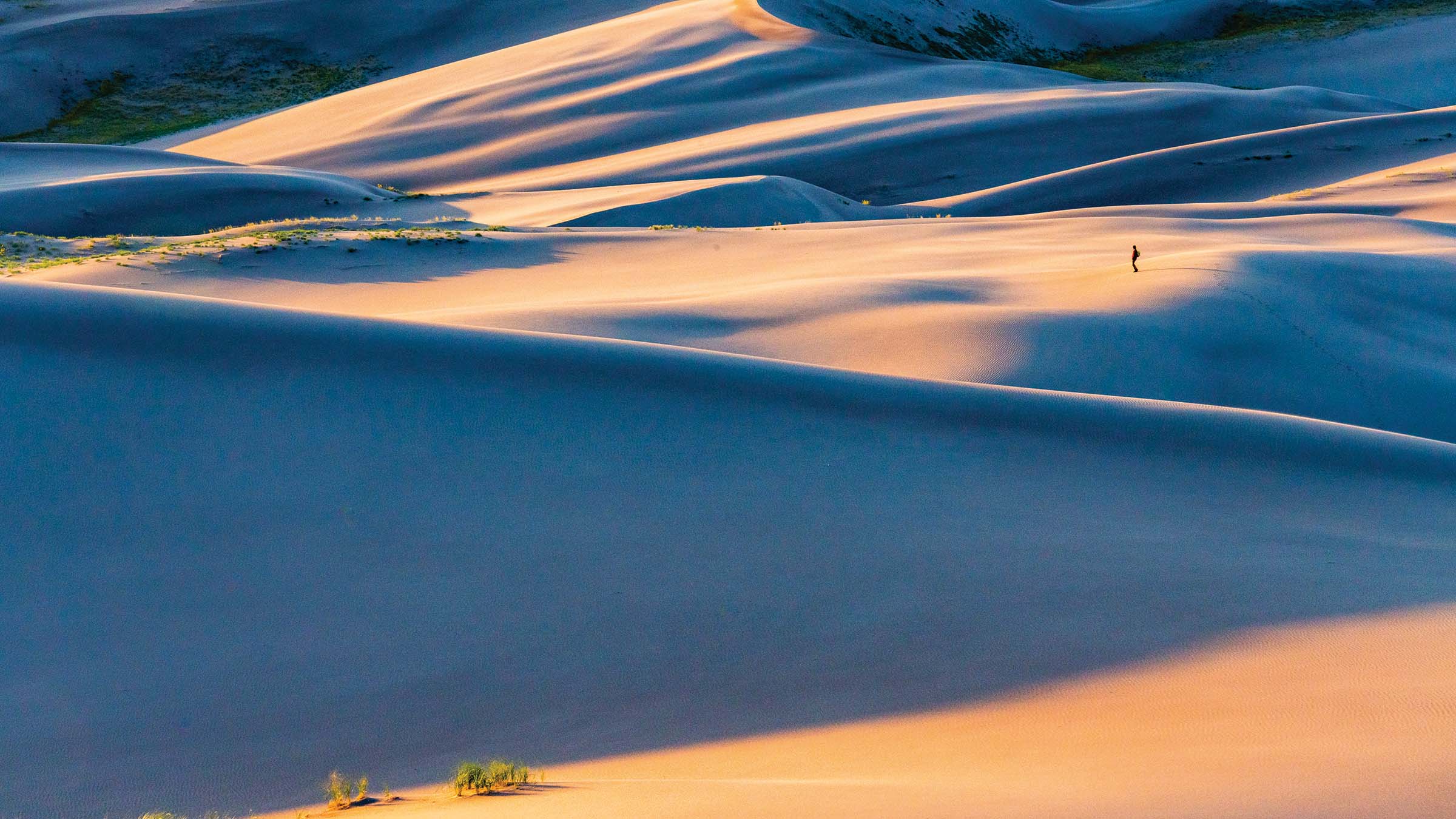
(Photo: Pete McBride)
Ed. Note:In his new book, Seeing Silence, photographer Pete McBride reflects on the profound absence of human noise he’s experienced while on expeditions to the world’s most remote places. Excerpted here is a story about the return of natural sound to an area that had fallen mute. On a 2014 trip to the Colorado River during a pulse flow that sent water coursing through parched desert for the first time in decades, McBride witnessed the quick, though momentary,return of rapids, birdsong, and life. The accompanying photography is from this journey and others he’s taken to in the desert southwest to explore nature’s sounds. Through this story, and others in his book, he “seeks to reveal the natural music of our wild realms and their importance not only for wildlife, but also for the fragile solace they provide us.”
Early on a spring Sunday in 2014, the white light and arid breeze of the Sonoran Desert ushered in a refreshing morning. Farm workers labored in nearby fields, harvesting produce and moving irrigation pipes, their schedules dictated by moisture and sun. It was a typical day, but then, at 8:04 a.m., something very atypical happened. A set of giant control wheels on the nearby Morelos Dam, unmoved for years, started screeching as they cranked open the crimson steel gates of the last major blockade on the Colorado River. As the rusty doors lifted, a titanic surge of greenish-brown water raced south, swirling and eddying down a riverbed that had sat parched and unused since the late 1990s. Thirsty tamarisk bushes and cedar grass choked the previously dry riverbed below.
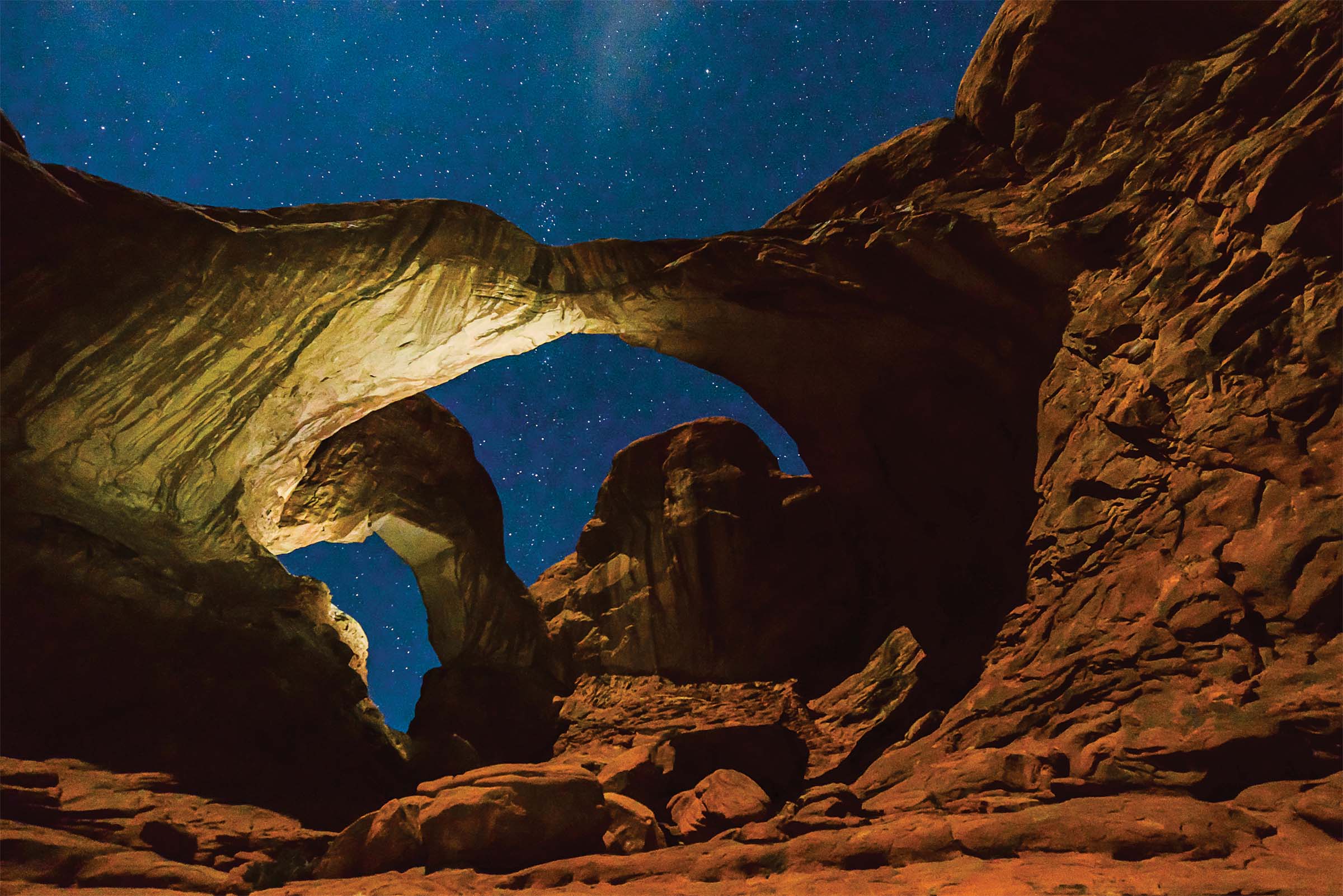
This blast of water is called a pulse flow, used by hydrologists to mimic a natural flood. The massive 105,392-acre-foot release was planned to last eight weeks, followed by smaller pulses over the next five years to support the rejuvenation of natural vegetation. It was a gush of liquid gold representing what many believed to be unfathomable—an international partnership to bring the river delta back to life.
For six million years, the Colorado River flowed to the Sea of Cortez, creating the largest desert estuary in North America and providing sanctuary for some 300,000 migrating birds. That cycle, however, diminished starting in the 1960s and then stopped altogether in the late 1990s, as the growing demand for water across seven U.S. and two Mexican states surpassed the river’s overallocated supply. Today, the Colorado is a lifeline for 40 million people, supporting more than five million acres of farmland. But in the process, its famous delta has dried and muted.
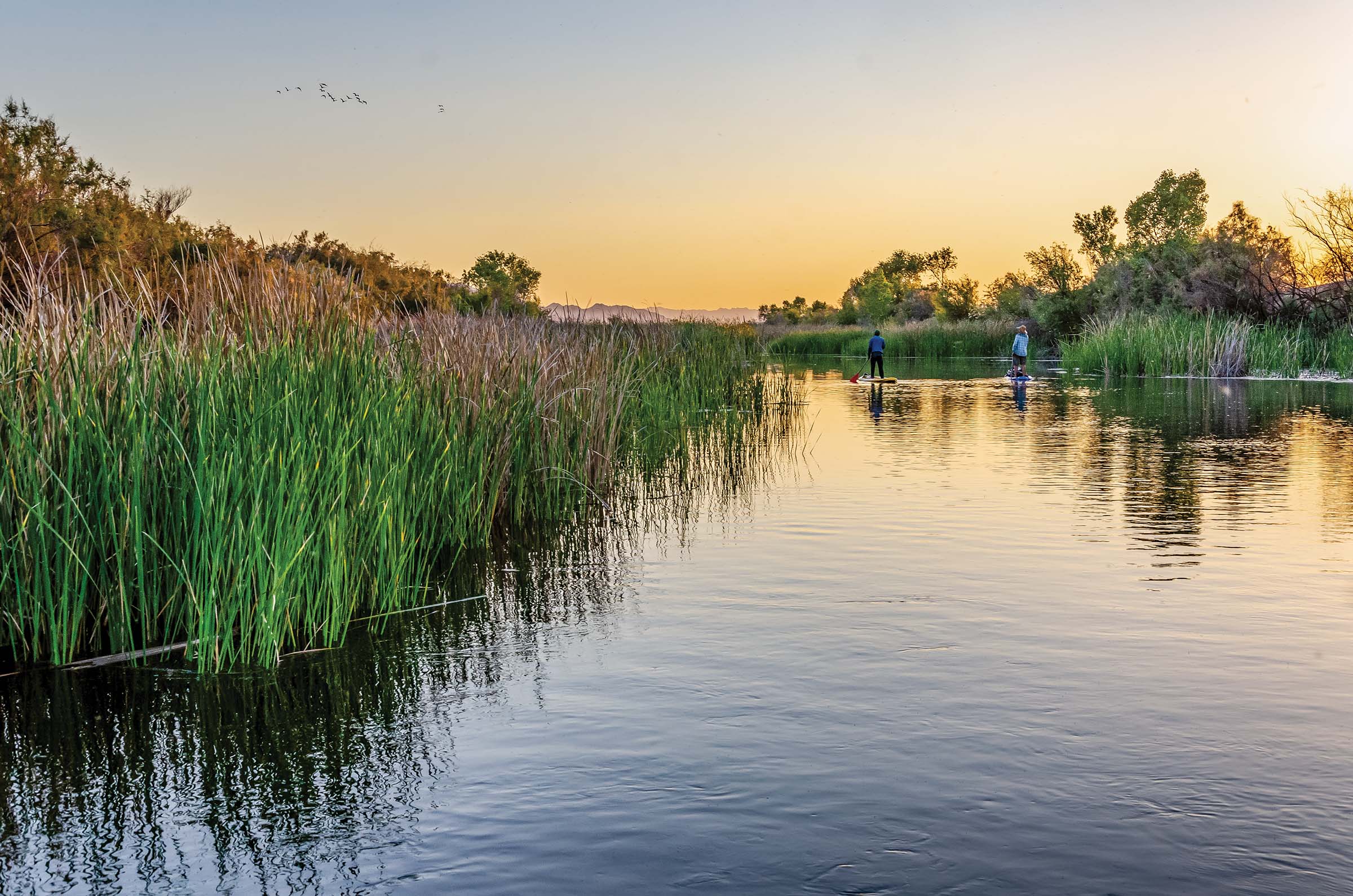
To mark the return of the water, I did what any river rat would do: I paddled it. Working on assignment for Outside, our small band floated the pulse on paddleboards and a canoe—uncertain where the lazy, bubbling flow would lead us.
That first day, it took us straight to a fiesta in San Luis Río Colorado, Mexico, a border community built on the banks of the river. Since the Colorado had been a rio of sand for as long as most folks could recall, the return of the agua warranted a party. Cowboys galloped on horses, musicians strummed guitars, kids splashed, vendors sold tacos, and a fisherman amazingly brought in a catch. The riverbanks rang with whoops and joy.
Two men in suits walked the sandy, moist banks before me. I asked what brought them down into the mud in such nice clothes.
“We are here to see the water, of course,” one said in Spanish, smiling.
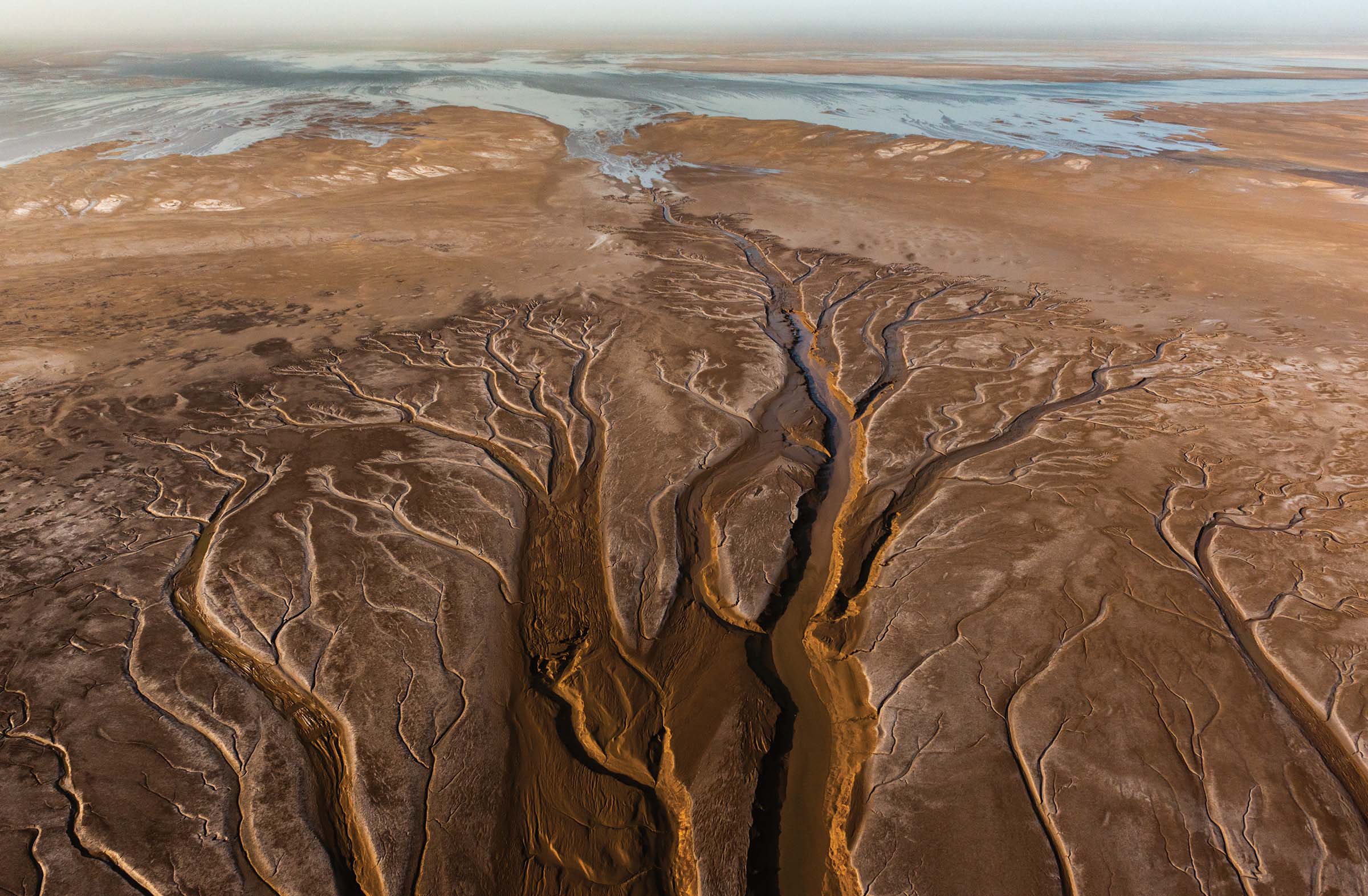
“Que bien—beautiful, no?” I responded.
“Si, que bien, but we need to see this permanently, like before. What a wonderful sound—a rio flowing again—la vida.” The man smiled again and continued walking along the new riverbank, his dress shoes caked in mud.
Downstream, the water moved south, through mesquite thickets and vast emptiness. And as we floated on, something else happened: Birdsong emerged everywhere. Crickets and coyotes joined the chorus. Even fish started jumping. How they got there so quickly, I can’t say. With each hour and day, the volume only grew. On our fourth day, the delta was blabbing on all cylinders, musical with hoots, howls, caws, buzzes, and splashes. Even the sopranos arrived, mosquitoes that appeared in armies. After nearly two decades without water, they were hungry. Somehow, the wild critters arrived quickly, surprising us all. Clearly, ecological memory is strong.
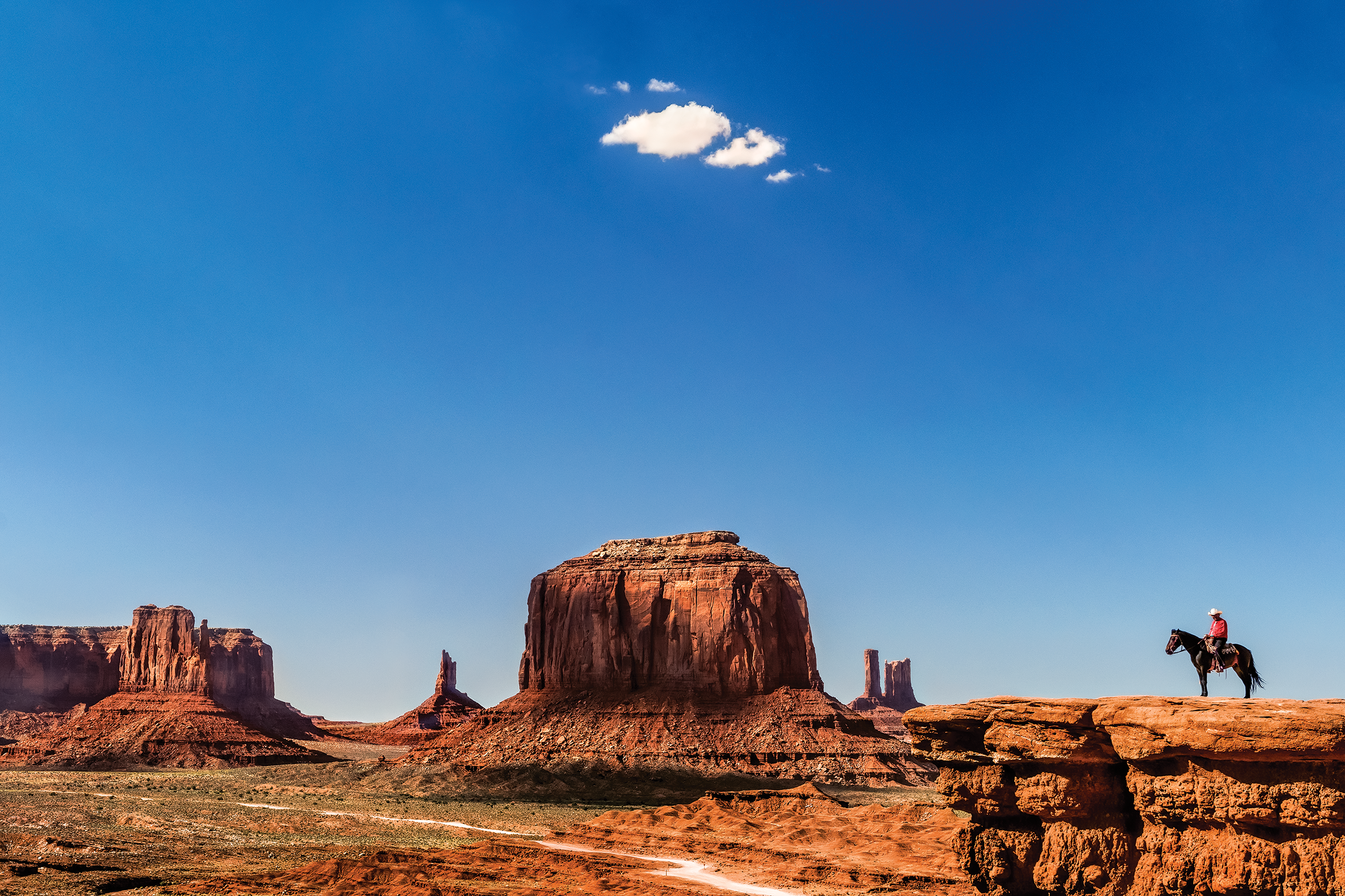
For those few days, it seemed the Colorado River of old was back, romping around its former playground like an oversized kid.
Years earlier, I had traveled this same stretch on a project documenting the entire river from source to sea. For me, the story was personal. My family, like many, has depended on the river’s flow to sustain hay crops on a ranch upstream in central Colorado. I was curious to see for myself what became of our irrigation water downstream. Did it ever reach the sea?
I was excited to experience the delta ecosystem that conservationist Aldo Leopold described in 1922, full of cottonwoods, migratory birds, fish, even jaguars. “The river was nowhere and everywhere,” he wrote, “for he could not decide which of a hundred green lagoons offered the most pleasant and least speedy path to the Gulf. So he traveled them all, and so did we.”
Instead, writer Jonathan Waterman and I made it just a few miles before we were marooned in a Frappuccino pit of frothy muck, sewage, and garbage. We were forced to hoof the last 100 miles, shouldering our rafts and packs. The journey took more than a week. We saw nothing but lifeless dirt and thirsty brush. And we heard less. There were no natural sounds at all—just dogs fighting at night and the nearby rumble of trucks throughout the day.
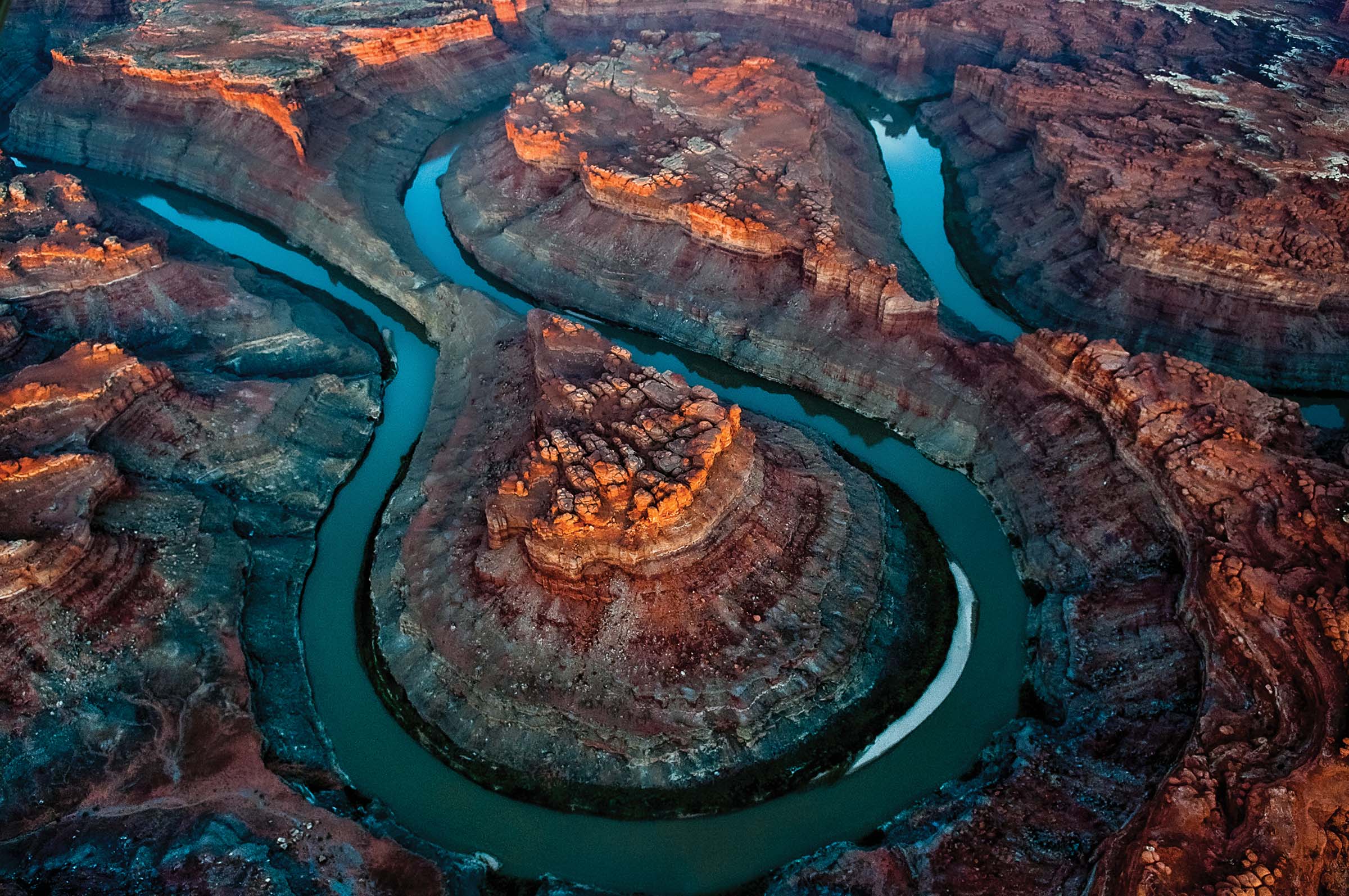
Ultimately, the pulse flow ended as quickly as it began. And the three of us who paddled that historic flow were the last three humans to float the Colorado River to the sea. We were also the last to hear the delta brimming with life. I don’t say that proudly but with sadness. Ongoing restoration efforts continued in pockets for five years after that, and collaborative nonprofit efforts like Raise the River have continued the fight to return the Colorado to the sea. But as water has become an ever more scant resource in the Southwest, the political will has nearly dried up as well. Climate change has complicated matters, making the region hotter and drier. The delta is once again a river of sand. Today, even the voices of binational restoration efforts have become hushed. The reason hinges, as it has for centuries, on the belief that we are above nature, not part of it.
Having seen and heard that delta dead and quiet, as well as alive and full of chatter, I can only hope such natural sounds are not forgotten.
At the time, I thought I was done documenting the Colorado River. But it wasn’t done with me. In 2015 and 2016, my old friend Kevin Fedarko and I took, quite literally, a walk in the park. Ours was a 750-mile trek through the Grand Canyon, which was getting squeezed by a litany of commercial developments, from gondolas and water-ski parks to helicopter ports and uranium mining. Our east-to-west trek took 71 days over the course of 14 months (we stopped and restarted several times). It was a trailless endurance test that consumed eight pairs of shoes and much of our body weight.
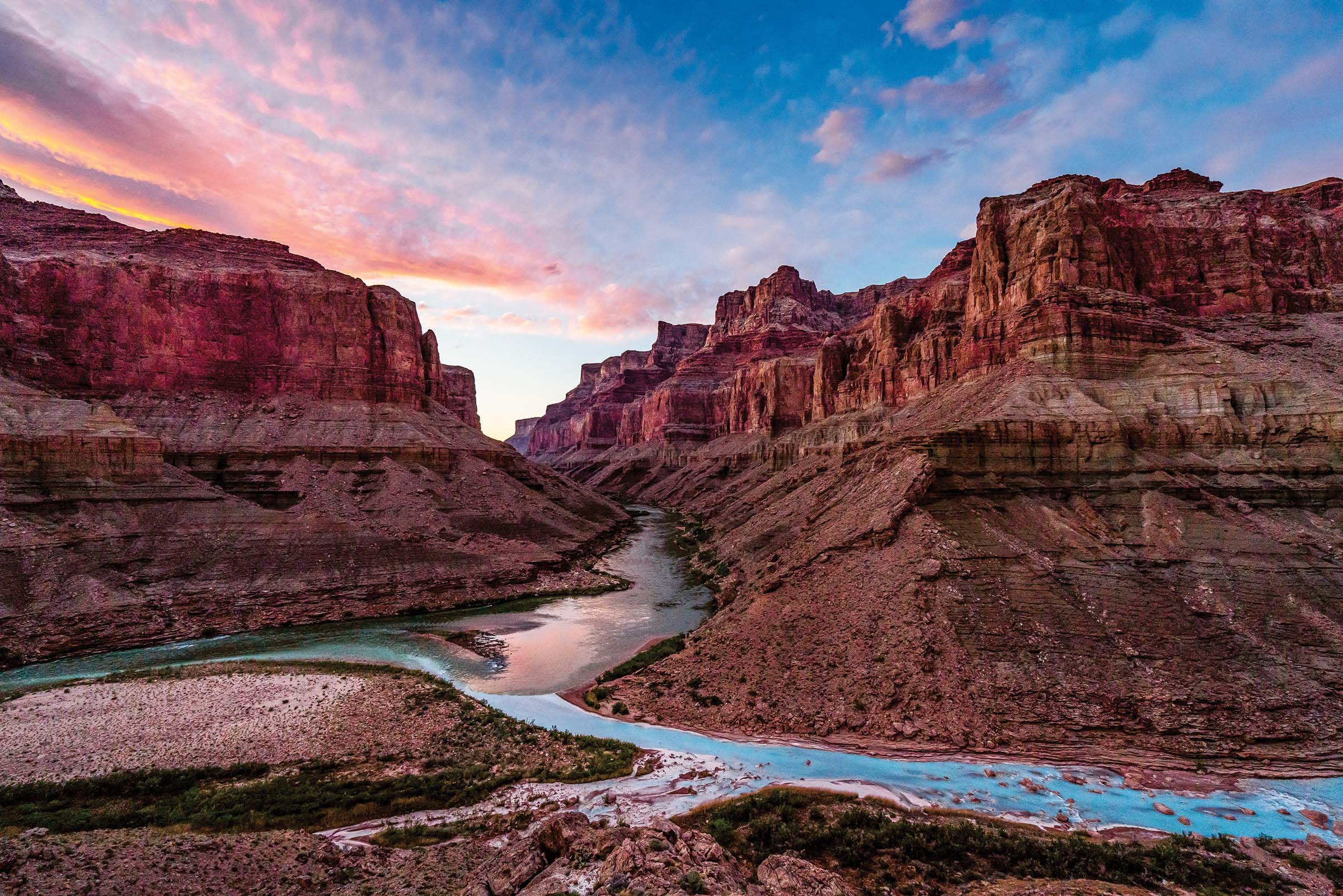
The journey, which we chronicled for National Geographic, proved much harder than any assignment I’d ever had—physically, emotionally, logistically, and photographically. (I did all the work with one camera powered by a miniature solar panel.) Finding our route, locating water sources far above the river, and rationing food was all daunting and humbling. As a result, I quickly gained immense respect for the subtleties of that arid cathedral—and for the fact that more people have walked on the surface of the moon than have hiked from end to end through our most iconic national park.
There were also profound lessons: friendship, simplicity, the endangered beauty of our night sky, the importance of Native voices, and the staggering need for public engagement to protect these shared treasures.
But one lesson rose to the top. Silence—and all the rich, natural music within it—is just as valuable as those famous views, perhaps more so. And it is incredibly fragile.
Halfway through our journey we met Dianna Uqualla, a Havasupai elder. Her people have lived within the Grand Canyon for centuries‚ long before it was a national park. Clothed in a white deerskin dress and clutching an eagle wing, she said, “Listen to what the canyon has to say. It will tell what you need to know—if you listen to her.”
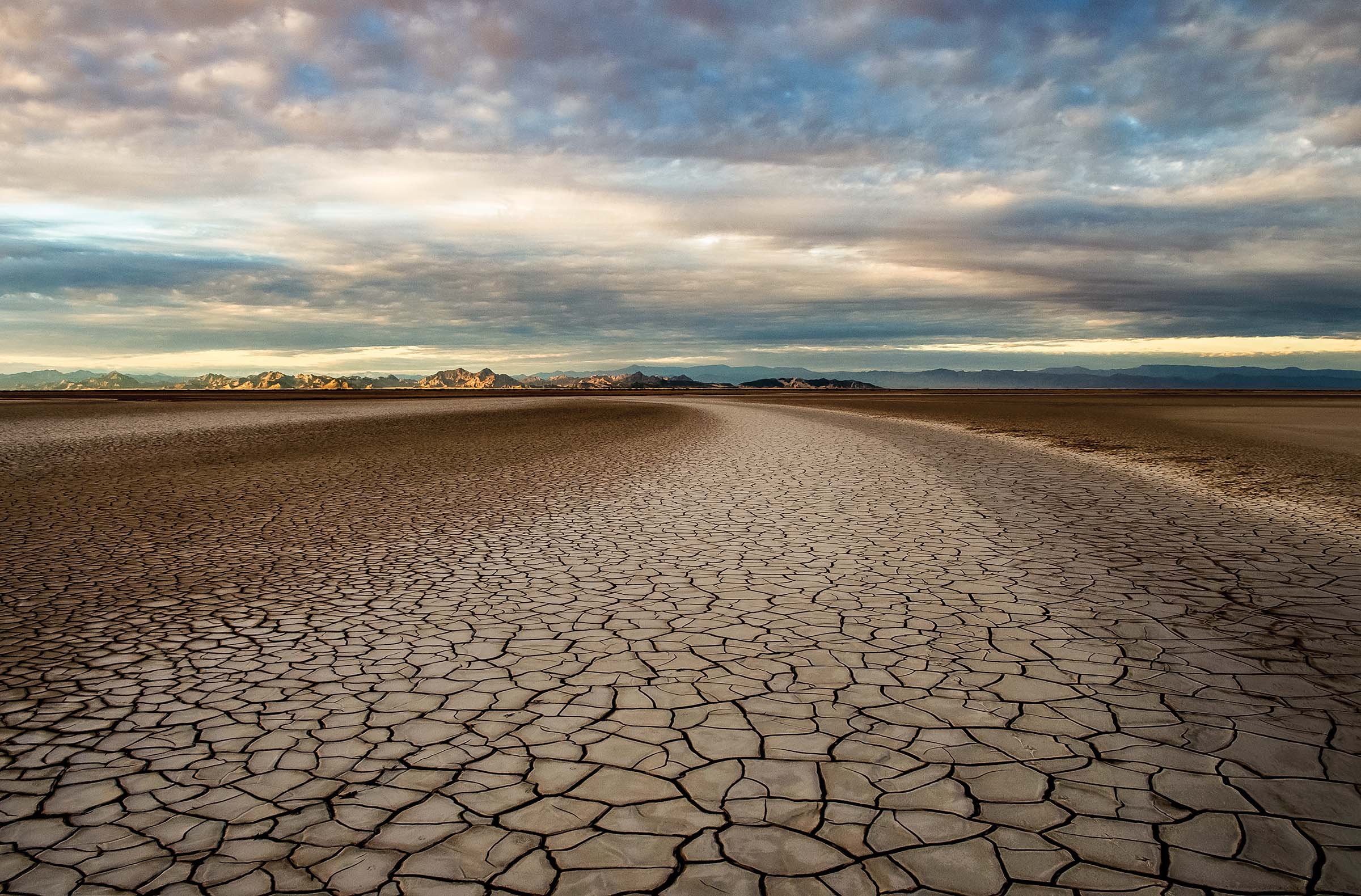
With each step, mile, and day we hiked west, I listened harder. And I started hearing new, subtler sounds, ones my camera couldn’t capture. The distant bleat of bighorn sheep, the rattle of a snake warning you before you get too close, the whoosh of a raven, the wonderful trickle of a spring, or my favorite morning alarm clock: the wisp of bat wings.
The more I listened, the more I saw.
Natural sounds thrive in silent places. But as we witness the Anthropocene—and with it the sixth mass extinction, with overwhelming global species loss—we are creating a new silence. It is a dead one. It is silence void of any natural sounds at all.
When forests fall, glaciers melt, and rivers dry, their inhabitants go with them. In North America, one in four songbirds—roughly three billion—have disappeared in the last half century, according to a study in Science. And it is not just threatened species, but common feathered friends as well: Baltimore orioles, dark-eyed juncos, barn swallows. Their songs are less frequent. The same goes for amphibians. Forty percent of the amphibian species known to science face extinction, hushing our evening backyard lullabies. Perhaps if we learned to listen more to our neighbors—whether human or hooved, clawed, winged, or finned—we might not just see more, but protect the music of nature’s silence as well.
Photographer Pete McBride has traveled on assignment to more than 75 countries. His third book, Seeing Silence, is out now.